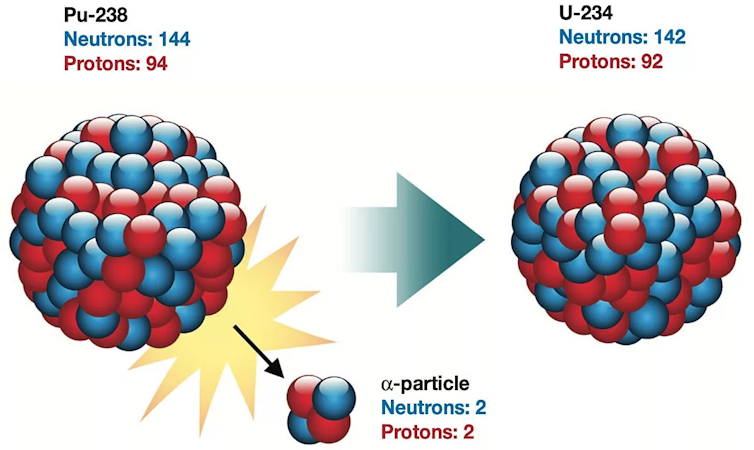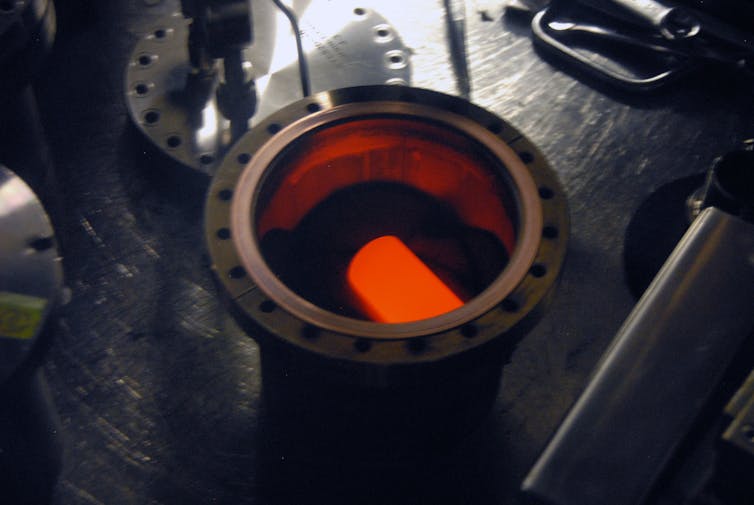Even in the inner solar system, spacecraft such as lunar or Mars rovers need alternative power sources.
As anastrophysicist and professor of physics, I teach a senior-level aerospace engineering course on the space environment.
One of the key lessons I emphasize to my students is just how unforgiving space can be.

Artist’s depiction of a Voyager probe.© Caltech/NASA-JPL
So how do engineers power missions in the outer reaches of our solar system and beyond?
RTGs are essentially nuclear-powered batteries.
Nuclear power
Radioisotope thermoelectric generators do not rely on chemical reactionslike the batteries in your phone.

Plutonium-238 decays into uranium-234 and emits an alpha particle, made of two protons and two neutrons.
Instead, they rely on the radioactive decay of elements to produce heat and eventually electricity.
While this concept sounds similar to that of anuclear power plant, RTGs work on a different principle.
Instead, plutonium-238 is an unstable element that will undergo radioactive decay.

The nuclear heat source for the Mars Curiosity rover is encased in a graphite shell. The fuel glows red hot because of the radioactive decay of plutonium-238.
This process often causes the element to change into another element, since the nucleus can lose protons.
When plutonium-238 decays, it emitsalpha particles, which consist of two protons and two neutrons.
Devices that use this principle are calledthermoelectric couples, or thermocouples.

The plutonium material is surrounded by a protective layer offoil insulationto which a large array of thermocouples is attached.
The whole assembly is inside a protective aluminum casing.
This outside, space-facing layer can be as cold as afew hundred degrees Fahrenheit below zero.

This strong temperature difference allows an RTG to turn the heat from radioactive decay into electricity.
But dont get too excited about buying an RTG for your house.
With the current technology, they can produce only afew hundred watts of power.

That may be enough to power a standard laptop, butnot enough to play video gameswith a powerful GPU.
For deep-space missions, however, those couple hundred watts are more than enough.
The real benefit of RTGs is their ability to provide predictable, consistent power.

The radioactive decay of plutonium is constant every second of every day for decades.
Over the course of about 90 years,only half the plutoniumin an RTG will have decayed away.
TheMars Curiosity and Perseverance roversand theNew Horizons spacecraftthat visited Pluto in 2015 have all used RTGs.

However, no missions capture the power of RTGs quite like the Voyager missions.
Each craft wasequipped with three RTGs, providing a total of 470 watts of power at launch.
Even at these extreme distances, their RTGs are still providing them consistent power.

These spacecraft are a testament to the ingenuity of the engineers who first designed RTGs in the early 1960s.
Benjamin Roulston, Assistant Professor of Physics,Clarkson University.
This article is republished fromThe Conversationunder a Creative Commons license.

News from the future, delivered to your present.









